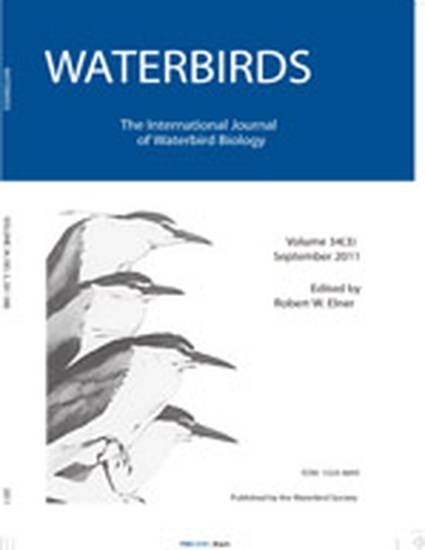
Article
Decline of Whimbrels within a Mid-Atlantic Staging Area (1994–2009)
Waterbirds
(2011)
Abstract
Whimbrels (Numenius phaeopus) were monitored during spring migration across a network of ten aerial transects within the barrier island-lagoon system along the lower Delmarva Peninsula, Virginia, USA. Transects were surveyed weekly from the last week of April through the first week of June (1994–1996, 2008–2009). Whimbrel numbers increased to a peak during the first and second weeks of May then decreased sharply during the third and fourth weeks of May in all years. Between the 1990's and 2000's, peak numbers declined by 50%, corresponding to a 4.2% annual rate of decline. A similar decline was detected in accumulated, season-wide numbers. Though similar in pattern, migration phenology was significantly different between the decades. The phenology difference resulted from a greater reduction in numbers during the first half of the study period compared to the last. Habitats used by Whimbrels (N = 31,314) included mudflats (95%) and salt marshes (5%). Habitat-specific densities (birds/km2) were 443 ± 26.6 and 9 ± 1.6 (mean ± SE) for mudflat and marsh patches, respectively, during the 1990's and 222 ± 11.1 and 8 ± 4.6 during the 2000's. These results support suggestions that Whimbrels are declining on the Hudson Bay breeding grounds and perhaps at major Atlantic Coast wintering sites.
Disciplines
Publication Date
September, 2011
DOI
https://doi.org/10.1675/063.034.0308
Citation Information
Bryan Watts and Barry R. Truitt. "Decline of Whimbrels within a Mid-Atlantic Staging Area (1994–2009)" Waterbirds Vol. 34 Iss. 3 (2011) p. 347 - 351 Available at: http://works.bepress.com/bryan-watts/295/
